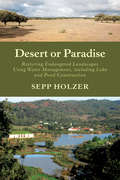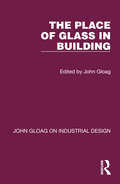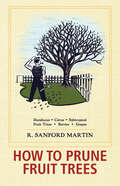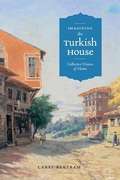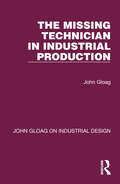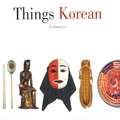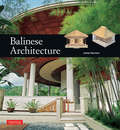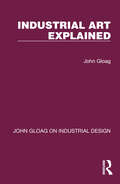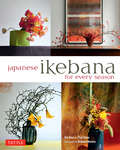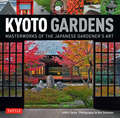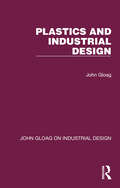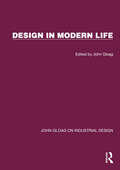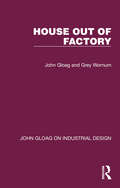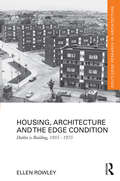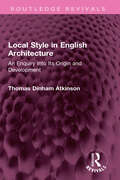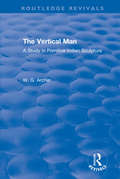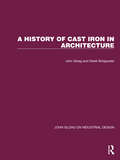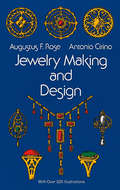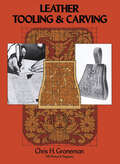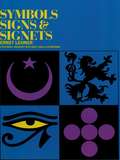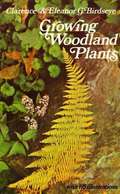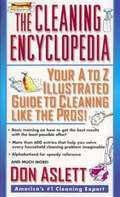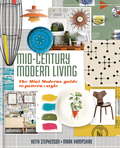- Table View
- List View
Desert or Paradise
by Sepp HolzerSepp Holzer farms steep mountainsides in Austria 5,000 feet above sea level. His farm is an intricate network of terraces, raised beds, ponds, and waterways, well covered with productive fruit trees and other vegetation, in dramatic contrast to his neighbors' spruce monocultures. Fans of Sepp Holzer have come from all over the world to see the productivity of his farm, a veritable permaculture paradise. His first book,Sepp Holzer's Permaculture, offers a detailed guide to what Holzer has achieved on his farm. Many readers might have wondered-but how can we achieve this on a global scale? Luckily, his newest book,Desert or Paradise, examines Holzer's core philosophy for increasing food production, earth health, and reconnecting mankind with nature, applied to reforestation and water conservation across the world. Through years of consultation with other countries, Holzer has developed a core philosophy for reconnecting mankind with nature even in arid or otherwise "lost-cause" regions. He details a process he calls "Grundierung," a term from painting meaning "base coat," which goes into great detail the importance of water, andDesert or Paradiseoffers his concept and guide to construction of large water reservoirs in arid, rainfall-dependent regions with examples from Greece, Turkey, Spain, and Portugal. Holzer describes the ecological and economic benefits of these changes, as well as the use of a variety of plant and animal species for further integration and regeneration of the surrounding areas, including reasons for reforestation and the cause and use of forest fires. Holzer also outlines his ten points of sustainable self-reliance and how these methods can help feed the world, such as the need to regulate the water budget, eliminate factory livestock farming, bring more fallow or unused areas into production, enlarge crop areas by using terracing and Holzer-style raised beds, regionalize instead of globalize, fight for land reform and engage in community building, go back to the ancient farming wisdom, and change the educational system. Also included are Holzer's ideas on beekeeping, humane slaughtering, nature spirits, the loss of roots in our society in general, and in politics especially.
The Place of Glass in Building (John Gloag On Industrial Design Ser.)
by John GloagOriginally published in 1943, The Place of Glass in Building is a comprehensive and compact survey of the structural uses of glass in 20th Century architecture. It gives the facts about the physical properties, the possibilities and the limitations of the glass in common use. It also deals with the attributes of specialised and decorative glass and provides detailed descriptions of the principal types which were manufactured in the UK. Intended for architectural students it may also be of interest to architects, for it is a condensed survey of the progress that has been made in this structural and decorative material.
How to Prune Fruit Trees: Twentieth Edition
by Georgia SalesMake the right cut every time and maximize your fruit production—covers over forty varieties of trees from apples to almonds and plums to pomegranates. Note: If you would like to see the Echo Point paperback version of How to Prune Fruit Trees, please search ISBN 1626549540. While the act of pruning is simple enough, knowing where and when to prune can confound even experienced gardeners. For more than half a century, Robert Sanford Martin&’s How to Prune Fruit Trees has been the go-to guide for pruners of all levels of expertise. As one reviewer noted, &“This book simplifies what other books complicate. It has a small amount of text paired with line drawings that help break pruning tasks down into something you can easily understand.&” Martin has judiciously pruned his words to make his advice as clear and simple as possible. His guidance in the art of cutting back and thinning out has been responsible for the preservation of countless healthy trees and orchards. In this enhanced edition, additional information from H. H. Thomas&’s Pruning Made Easy explores the treatment of roots, side shoots, sub-laterals, standards, cordon trees, and other aspects of plant care. Well illustrated and clear, this book is an indispensable guide for year-round pruning success for both seasoned and amateur gardeners.
Imagining the Turkish House: Collective Visions of Home
by Carel Bertram"Houses can become poetic expressions of longing for a lost past, voices of a lived present, and dreams of an ideal future." <P><P>Carel Bertram discovered this truth when she went to Turkey in the 1990s and began asking people about their memories of "the Turkish house." The fondness and nostalgia with which people recalled the distinctive wooden houses that were once ubiquitous throughout the Ottoman Empire made her realize that "the Turkish house" carries rich symbolic meaning. In this delightfully readable book, Bertram considers representations of the Turkish house in literature, art, and architecture to understand why the idea of the house has become such a potent signifier of Turkish identity.
The Missing Technician in Industrial Production (John Gloag On Industrial Design Ser.)
by John GloagOriginally published in 1944, The Missing Technician shows how Industrial Design must begin at the very first stages of planning a product. The procedure of a design research committee is outlined – a type of practical co-ordination of the work of industrial designers and production technicians which proved highly effective. The value of materials like aluminium and plastic are emphasized, but equally the importance of glass and cast iron is stressed, especially when handled in new ways that 20th Century techniques made possible.
Things Korean
by O-Young Lee John HolsteinThings Korean is a useful guide to traditional life in Korea, presented in an accessible and attractive format. O-Young Lee, former Korean Minister of Culture gives us a survey of native objects from Korea, from totems(Changsung) to hair-pins(binyo), crock pots(Changdokdae) to temple bells(Jong), scissors(Kawi) to graves(mudon) explaining their significance and place in everyday Korean life.Each item in the book is listed under its English and Korean name; a glossary is provided to further assist the reader. Lavishly illustrated with more than 100 color illustrations, Things Korean is a magnificent celebration of Korean culture.
Balinese Architecture
by Luca Invernizzi Tettoni Bruce Granquist Davison Julian Nengah Enu Mubinas HanafiBalinese style villas and resorts are popping up everywhere-from Ibiza to St Barts to Singapore. But what is Balinese architecture? And why is it so popular today?Traditional Balinese houses, temples and pavilions are designed to allow man to exist in harmony with the natural forces of the universe-reflecting core Balinese beliefs about man's place in relation to the cosmos, the gods, the ancestors, and the world around him. Innovative local and Western architects have been designing resorts and villas on Bali for decades, drawing their inspiration from these local traditions.In this one-of-a-kind book, author Julian Davison provides a comprehensive guide to Balinese architectural forms, the Balinese belief system, the rituals associated with building, the materials and construction techniques, and the intricate ornamentation used. Over 100 watercolor illustrations and photographs provide a clear picture of the island's architecture as well as an eye-opening look at a culture and a people that have captivated the world's imagination.
Industrial Art Explained (John Gloag On Industrial Design Ser.)
by John GloagOriginally published in 1934 this book became recognised as one of the principal standard works on industrial design and industrial architecture. The chapters explain the complete operation, character and background history of industrial art, its relation to architecture, materials, industrial production and retail distribution. It is fully illustrated with line drawings and photographs.
Japanese Ikebana for Every Season
by Noboru Murata Yuji Ueno Rie ImaiThe true meaning of Ikebana-the traditional Japanese art of flower arrangement-is the ability to take a few beautiful flowers and plans and tastefully present them in very simple containers to decorate your home. Whether for Mother's Day, Valentine's Day, or a special birthday or anniversary-Japanese Ikebana for Every Season simplifies and demystifies this ancient art by presenting 53 elegantly simple arrangements that anyone can create at anytime at home.The key to good Ikebana arrangements is to understand a few very simple principles-like the idea of mitate-seeing old things with new eyes, as well as learning a few very easy techniques of flower stabilization and how to support plants and flowers inside a vase or container. Using simple, common flowers and plants from your garden, from a nearby field or forest, or from your local florist-you can easily create these lovely Ikebana in just a few minutes if you know how.Authors Rie Imai and Yuji Ueno explain how to select the flowers and the containers by simply using things that are already around you-and then they show you how to turn them into something special. The basic instructions in the book cover a wide range of styles that encourage readers to use their own creativity rather than copying traditional and highly technical Ikebana design concepts.No matter what time of year it is and regardless of your taste or budget-the arrangements in this book will lend a touch of Japanese elegance to your home!
Kyoto Gardens
by Judith ClancyKyoto Gardens is a labor of love from master photographer Ben Simmons and Kyoto-based writer Judith Clancy. Simmons' photographs present a fresh and contemporary look at Kyoto's most important gardens. Their beauty is enhanced and humanized by gardeners tending the grounds using the tools of their art. Clancy's graceful text provides historic, aesthetic and cultural context to the gardens. Combining wonder and rigor, she describes how Kyoto's most beloved gardens remain faithful to their founders' creative spirit and conception. Journey to Kyoto's thirty gardens with just a turn of a page, or use the handy maps to plan your trip.
Kyoto Gardens
by Judith ClancyKyoto Gardens is a labor of love from master photographer Ben Simmons and Kyoto-based writer Judith Clancy. Simmons' photographs present a fresh and contemporary look at Kyoto's most important gardens. Their beauty is enhanced and humanized by gardeners tending the grounds using the tools of their art. Clancy's graceful text provides historic, aesthetic and cultural context to the gardens. Combining wonder and rigor, she describes how Kyoto's most beloved gardens remain faithful to their founders' creative spirit and conception. Journey to Kyoto's thirty gardens with just a turn of a page, or use the handy maps to plan your trip.
Plastics and Industrial Design (John Gloag On Industrial Design Ser.)
by John GloagOriginally published in 1945, Plastics and Industrial Design is a non-technical work of reference for manufacturers and designers who, after the Second World War were beginning to realize the possibilities that manufacturing with Plastics could bring. The different types of plastics and their uses is discussed, as is their impact on the design of manufactured articles. Whilst the extensive use of plastic may have fallen out of favour in recent years due to environmental concerns, this book reminds us that in their infancy they offered exciting manufacturing possibilities.
Design in Modern Life (John Gloag On Industrial Design Ser.)
by John GloagOriginally published in 1946, this book is based on a series of broadcast talks on design. Led by an engineer, an artist and critic of architecture and industrial design, the discussions focussed on the problems that were involved by a general application of design to the environment of contemporary life. It surveys the possibilities of design in modern life and the talks have been rewritten, amplified and revised for the purposes of the book.
House Out of Factory (John Gloag On Industrial Design Ser.)
by John Gloag Grey WornumOriginally published in 1946, when Britain was facing a post-war housing crisis, this book dealt with the issue of the factory-produced house in being part of the solution for housing people in an affordable manner and a short time-scale. The book, aimed at both lay-people and technicians discusses aspects of pre-fabricated housing such as comfort, standardisation and aesthetics. The book is illustrated with 48pp of black and white plates.
Housing, Architecture and the Edge Condition: Dublin is building, 1935 - 1975 (Routledge Research in Architecture)
by Ellen RowleyThis book presents an architectural overview of Dublin’s mass-housing building boom from the 1930s to the 1970s. During this period, Dublin Corporation built tens of thousands of two-storey houses, developing whole communities from virgin sites and green fields at the city’s edge, while tentatively building four-storey flat blocks in the city centre. Author Ellen Rowley examines how and why this endeavour occurred. Asking questions around architectural and urban obsolescence, she draws on national political and social histories, as well as looking at international architectural histories and the influence of post-war reconstruction programmes in Britain or the symbolisation of the modern dwelling within the formation of the modern nation. Critically, the book tackles this housing history as an architectural and design narrative. It explores the role of the architectural community in this frenzied provision of housing for the populace. Richly illustrated with architectural drawings and photographs from contemporary journals and the private archives of Dublin-based architectural practices, this book will appeal to academics and researchers interested in the conditions surrounding Dublin’s housing history.
Local Style in English Architecture: An Enquiry Into Its Origin and Development (Routledge Revivals)
by Thomas AtkinsonOriginally published in 1947, this book examines the regional styles of architecture which developed inside England itself, particularly during the later medieval period. It discusses the causes and locations of these regional variations. In explaining the cause for the geographical variations in stye, the author investigates the various factors responsible for bringing them about, such as geology, race, religion, foreign influence, transport and fashion. As churches have survived the passage of time better than many secular buildings, the emphasis is on church architecture (although not exclusively). The book contains over 120 photographs and the book is an original and important inquiry into the origin and development of local styles in English architecture.
The Vertical Man: A Study in Primitive Indian Sculpture (Routledge Revivals)
by W.G. ArcherOriginally published in 1947, The Vertical Man explores a form of Indian sculpture largely ignored in other studies, with a focus on two kinds of sculpture from the province of Bihar. The book provides detailed analysis of the formal characteristics of the sculpture and the influences of the myth, ritual, and context in which they were commissioned and made. It explains why the sculpture is regional and "why the styles are what they are". It is an original study which throws light on important subjects such as the relations of art and religion and of art and economics. The Vertical Man will appeal to those with an interest in art, specifically sculpture and the art of the Indian countryside.
A History of Cast Iron in Architecture (John Gloag On Industrial Design Ser.)
by John Gloag Derek BridgwaterOriginally published in 1948, A History of Cast Iron in Architecture is a comprehensive history of the part that has been played by cast iron in architecture and the allied arts in Britain. Any history of the rise and development of the iron-founding industry becomes virtually a history of the First Industrial Revolution. Examining the use of cast iron by builders and architects from late medieval times to the middle of the 20th Century the authors have also recorded a miniature history of British Industry. The introduction throws light on the early developments of iron-founding. The main sections of the book describe the rise and expansion of the cast-iron industry and its gradually increasing significance in architecture from 1650 to 1945. There are over 500 illustrations.
Jewelry Making and Design: An Illustrated Text Book For Teachers, Students Of Design, And Craft Workers In Jewelry
by Antonio Cirino Augustus F. RoseThe ancient, highly skilled craft of manipulating gold, silver, precious, and semi-precious stones into jewelry is here set forth in a practical text. The authors take you through a graded series of problems, progressing from simple to complex pieces, teaching you all you need to know along the way.Making a pierced brooch is the first problem. You learn to affix a tracing of the design to the metal, and to handle a center punch, saw frame and saw, needle file and flat-round file, and emery cloth. This first problem is fully illustrated, as are all the problems, with 53 different design ideas, as well as photographs of the tools and processes involved. Subsequent problems teach you to make brooches set with stones, chased and repoussé brooches, wire pendants, rings with four different types of settings, chains, and cuff links. Executing these pieces teaches you the processes of soldering, pickling, using a gas jet and blow pipe, making a plain and shouldered bezel, annealing, enameling, making a mold for casting, and much more.Following the section on the making of jewelry, the authors turn to a discussion of the aesthetics of jewelry design. They suggest sources in nature and in art for creative ideas and motifs, and give helpful methods for developing these into designs suitable for various types of jewelry pieces.The authors, both formerly of the Rhode Island School of Design, animate every line of the text with the knowledge that only long experience in the craft and in teaching the craft can give. For many years, beginning and experienced crafters have kept this authoritative text beside them, using it to avoid costly mistakes and to save many hours of trial-and-error experimentation.
Leather Tooling and Carving
by Chris H. GronemanThis book by a well-known handicrafts instructor will teach you the fine art of leather tooling and carving so that you will now be able to make the handsomely crafted leather of handbags, belts, watchbands, and billfolds you have often admired. You will find that custom-crafted leather items are not only easier to make than you may have expected but also offer quite an enjoyable hobby.Many books deal with leatherwork in general but this book is one of the few that concentrate on tooling and carving. The author first introduces the various types of leather and tools, giving complete information on how to identify the superior sections of a hide and how to decide on which kind of leather is best for your purpose: kidskin for gloves, steerhide for billfolds, etc. Twenty-six different leather tools are depicted along with an illustration of the impressions the different kinds of stamping tools make. After this necessary background, the author covers the basic processes of leather crafting from start to finish: cutting and preparing the leather, transferring the design, tooling, carving, lacing, cleaning, dyeing, and finishing. This section is profusely illustrated with line drawings and photographs to make each step easy to master. You are now ready to begin the special projects, for which complete instructions and patterns are provided: bookmarks, key cases, coin purses, watchbands, billfolds, belts, shaving kits, camera bags, handbags, and cowboy accessories are just a few of the things you will be able to make.Hand-tooled leather items are quite expensive on the market, but you will find yourself with substantial savings when you make them yourself. What is more important, however, is that leather tooling and carving is an enjoyable craft that anyone can become adept at -- and this book will provide you with all you need to do just that.
Symbols, Signs and Signets
by Ernst LehnerReproducing in historical sequence 1355 signs, seals, and symbols from the simplest drawings of heavenly bodies, through the intricate heraldic devices of the Middle Ages, to modern cattle brands and hobo sign language, this book will be of immense value to the commercial artist and designer. The development of man as an artist and designer is here recorded pictorially by one of the world's foremost experts in the field of graphic art, Ernst Lehner.This book is divided into 13 sections, each with a separate brief introduction: Symbolic Gods and Deities (Egyptian, Babylonian, Greek, Germanic, Incan, Aztec, Hindu, Buddhist, Taoist, etc.); Astronomy and Astrology; Alchemy, Magic, and Mystic (Nordic runes, magic circles, etc.); Church and Religion; Heraldry (coats of arms, badges, etc.); Monsters and Imaginary Figures; Japanese Crests; Marks and Signets (engravers, goldsmiths, armorers, stonemasons, etc.); Watermarks (fourteenth-eighteenth centuries); Printer's Marks (fifteenth-seventeenth centuries); Cattle Brands; and Hobo Signs. All the signs, symbols, and signets are pictured in black and white on strikingly laid out pages, with full explanatory notes for both lay readers and specialists.Anyone interested in means of communication other than language will find this book fascinating and authoritative. The student and teacher in the graphic arts will find it a practical visual guide through the transformation of simple marks and signs into the complicated emblems of our time.
Growing Woodland Plants
by Clarence Birdseye Eleanor G. BirdseyeThe authors explain the interrelationships of trees, wildflowers, ferns, bacteria, and the soil of woodlands; suggest ways of preparing both large and small wildflower gardens; and describe when, where, and how to gather woods plants. Includes detailed information on over 200 wildflowers and ferns. 195 illustrations.
Creative Home Decorating
by Hazel Kory Rockow Julius RockowInterest in home decoration is at a higher pitch today than ever before. Modern techniques of production have made home furnishings available to all persons and at all income levels. Home decoration is a creative activity. As such, it is guided by principles and aesthetic values common to all the creative arts. Trial and error is uneconomical of money, time and effort and, all too often, never transcends error. For this reason, the authors have emphasized principles throughout the book, as well as their practical application.
The Cleaning Encyclopedia: America’s # Cleaning Expert
by Don AslettThe ultimate guide to the art of cleaning, this reference is packed with professional secrets for getting maximum results through minimum results through minimum effort. Discover how to save time, money, and elbow grease on every cleaning problem, as well as how to prevent housework with surprising tricks of the trade. From aluminum siding to zoom lenses, this alphabetical index covers every job, big and small.
Mid-Century Modern Living: The Mini Modern's Guide to Pattern and Style
by Keith Stephenson Mark HampshireBursting with beautiful ideas for bringing a signature mid-century look into your own space, as well as practical advice on what will work where, this is an essential guide for any lover of interior design and mid-century style. In this beautifully photographed book, Mark and Keith of Mini Moderns show you how to create a timeless mid-century look in your own homeKnown for their striking use of pattern and colour, Mark and Keith's designs are inspired by everything from childhood memories to commentaries on popular culture, and through this lens they explore how different influences and designers have created key mid-century looks. They delve into the cornerstones of mid-century style, from colour and pattern to materials and curation, and share their secrets on how to bring together the things you love to create your own look. They also include inspirational case studies to demonstrate particular looks, from Beatnik Beach House to Scandi Rustic, Seaside Modern to Studio Townhouse.
